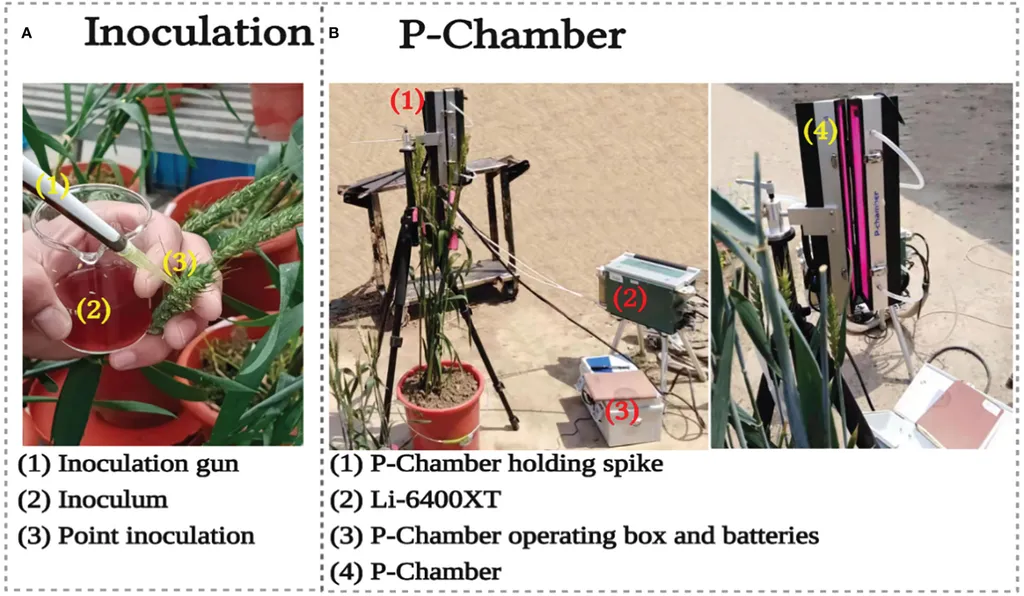In the heart of China’s Jiangsu province, researchers at Nanjing Agricultural University are harnessing the power of artificial intelligence to tackle a pressing global challenge: Fusarium head blight (FHB), a devastating wheat disease that can wipe out half of a crop during severe outbreaks. Leading this charge is Shuxin Zhu, a scientist at the College of Smart Agriculture, who has developed a groundbreaking model called FHBNet that could revolutionize how we evaluate and combat this agricultural menace.
FHB is a significant concern for wheat farmers worldwide, causing substantial yield losses and economic impacts. Traditional methods of evaluating disease severity are often labor-intensive and time-consuming, making them less practical for large-scale farming operations. Moreover, existing approaches struggle to differentiate between healthy wheat and slightly infected plants, leading to unreliable predictions.
Zhu and his team have tackled these challenges head-on by developing FHBNet, a deep learning model that evaluates the severity of FHB using aerial RGB images. “Our model is designed to capture the global contextual relationships from each pixel, allowing it to accurately locate small lesions in wheat ears even under complex conditions,” Zhu explains. The team utilized a dataset of 6,035 RGB aerial images, each labeled as light, moderate, or severe, to train and test their model.
The results are impressive. FHBNet achieved an accuracy of 79.49% on the test set, outperforming mainstream neural networks like MobileViT, MobileNet, EfficientNet, RepLkNet, ViT, and ConvNext. The model’s success lies in its innovative use of a multi-scale criss-cross attention (MSCCA) block and a bi-level routing attention (BRA) module. These components enable FHBNet to capture the spatial context of wheat ears and accurately locate small lesions, even in varying severity levels and illuminations.
The implications of this research are far-reaching. By providing a rapid and non-destructive method for evaluating FHB severity, FHBNet can significantly accelerate disease resistance breeding tasks. This, in turn, can lead to the development of more resilient wheat varieties, reducing yield losses and enhancing food security.
“Our study validates the feasibility of using image-level annotated aerial RGB images for high-throughput and accurate phenotype analysis,” Zhu notes. This breakthrough could pave the way for more efficient and effective disease management strategies, benefiting farmers and the agricultural industry as a whole.
The research, published in the journal *Frontiers in Plant Science* (translated to English as “Frontiers in Plant Science”), represents a significant step forward in the fight against FHB. As the global population continues to grow, the demand for wheat and other staple crops will only increase. Innovations like FHBNet are crucial in ensuring that our agricultural systems can meet these demands sustainably and efficiently.
In the broader context, this research highlights the transformative potential of agritech and deep learning in modern agriculture. By leveraging advanced technologies, we can address longstanding challenges and develop more resilient and productive farming systems. The work of Shuxin Zhu and his team at Nanjing Agricultural University serves as a testament to the power of innovation in shaping the future of agriculture.

